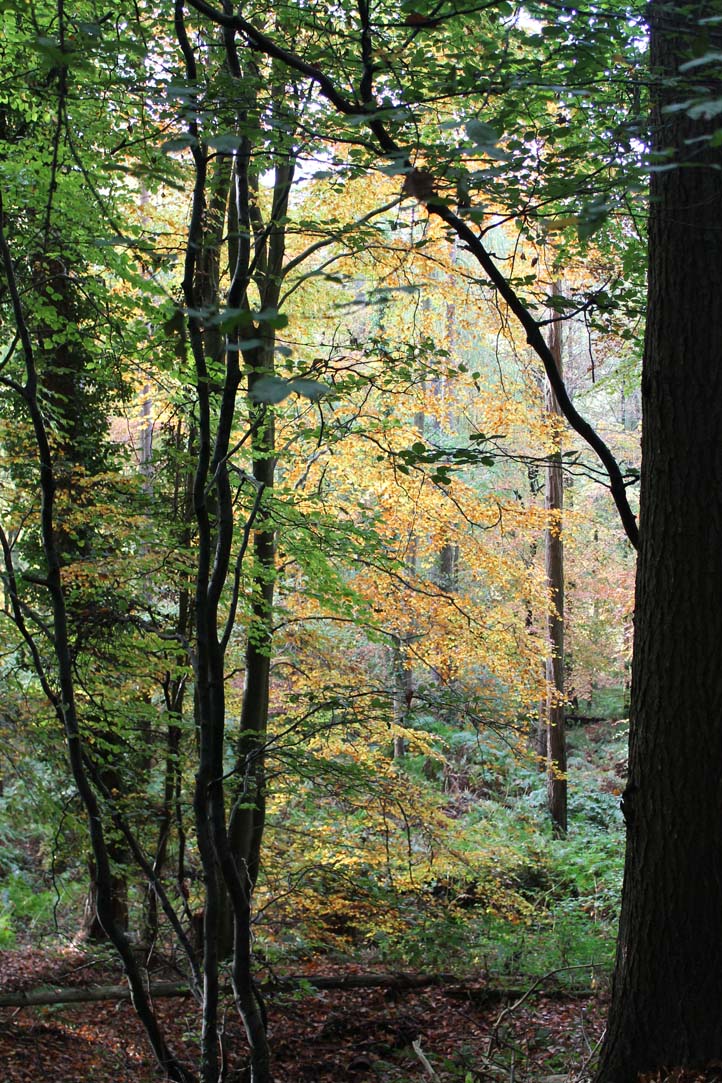 Stephen Moss’ chapter on November in Wild Hares and Hummingbirds is noticeably shorter than the others. The landscape of the Somerset levels, where he lives, is sodden and dank. The birds of summer have left and the winter visitors are only just starting to arrive. A bitter west wind whips across the open fields. Being so near a grand old dame of a river here, I can relate to his descriptions of sea fogs funneling up from the coast. Both early mornings and evenings are characterised by mist. He describes “gentle wisps hanging above the rhynes; then, as the temperature drops, spreading out over the lanes and fields.” And in those fields flocks of starlings gather to feed, rising up in great masses, black specks against the fading light.
Stephen Moss’ chapter on November in Wild Hares and Hummingbirds is noticeably shorter than the others. The landscape of the Somerset levels, where he lives, is sodden and dank. The birds of summer have left and the winter visitors are only just starting to arrive. A bitter west wind whips across the open fields. Being so near a grand old dame of a river here, I can relate to his descriptions of sea fogs funneling up from the coast. Both early mornings and evenings are characterised by mist. He describes “gentle wisps hanging above the rhynes; then, as the temperature drops, spreading out over the lanes and fields.” And in those fields flocks of starlings gather to feed, rising up in great masses, black specks against the fading light.
In the midst of a very wet week we were lucky that the rain held off at just the right moment on the night of the school fireworks display. Being on the PTA I was busy collecting tickets on the gate while Big Dreamer man-handled the kids through the crowds to get a good spot. Steve Roud recounts the origins of Bonfire Night in his chapter on November in his book, The English Year. He says, “The enormity and astounding audacity of the plot to assassinate the sovereign and all ruling elite of the country in one fell swoop was bound to mark the day as significant in the history of the nation.” Historically, Bonfire Night celebrations were pretty dangerous. Roud describes people throwing firecrackers into open windows and others making homemade fireworks in their kitchens. In the present day we are all very mindful of the dangers of fireworks. Little Owl came home from school reciting the Fireworks Code. At the school we had to meet all sorts of health and safety regulations in order to put on a public display. Roud identifies one place where you can get a glimpse of what historical celebrations might have been like and that is at Ottery St Mary, not far from us here. There burning tar barrels are hoisted onto the shoulders of participants who run with them through the streets. Roud says, “There is little crowd control, and the barrels pass close enough to the packed spectators to cause real alarm, screams and rapid retreats, which is all part of the fun.”
I have to say I’m not a fan of burning a guy on the bonfire, or effigies of anyone else for that matter. It’s a little too close to scenes from the Middle East we see on our TV screens of maddened crowds shouting death to whoever is currently displeasing them. I thought Little Owl’s school did a very good job of exploring the guy tradition by looking at the origins of the right to protest and suffrage.
Now what is essential to Bonfire Night for me is the food, and Roud doesn’t neglect this aspect. He describes jacket potatoes cooked at the edge of the fire. I would add mugs of steaming soup. Then there is Parkin. For those of you who don’t know Parkin is an oatmeal gingerbread. Spellchecker obviously hasn’t heard of it as it keeps trying to update Parkin to Parking! We make it every year and it is delicious, although it must be made several days before the night as it improves with time. You can’t go wrong with Delia Smith’s recipe here. My mother-in-law made an absolutely stonking version this year. I’m pretty sure she used Delia’s recipe so the only thing that I can think that would account for the difference was that it was baked in Yorkshire!
Here is an autumnal photo from half term, sadly all that colour is gone now.







Re Parkin, I think a bit of luck too! Made it again when we got back from the Forest but not as good!!